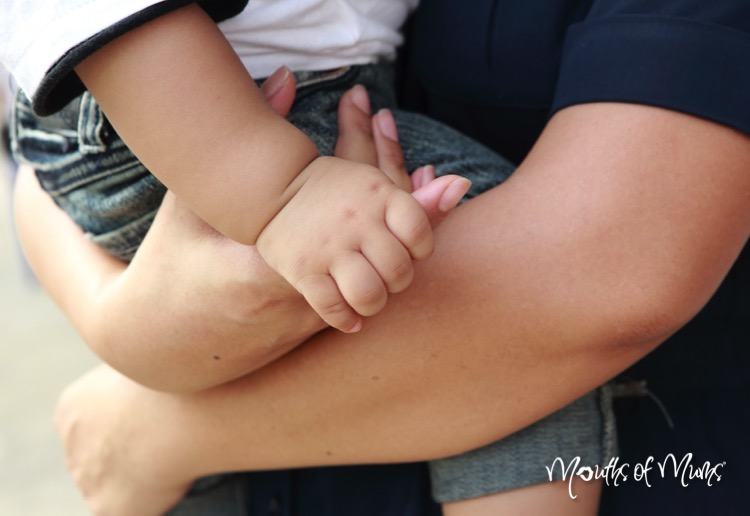Mummy is dropping Jack off at day-care to go to work. Jack is in the arms of his carer who he will spend the day with. As Mummy says goodbye and turns to walk out the door Jack begins to cry and put his arms out for his mother.
Jack continues to be upset for a few minutes after Mummy leaves but eventually settles and gets on with playing. When his mother returns at the end of the day Jack is very happy to see her and welcomes her with a big smile and a hug.
In this familiar scenario Jack is demonstrating what psychologists call typical secure attachment behaviour. He is sad to be separated from his mother but assured that she will return and happy about their reunion.
Attachment style refers to the general way we relate to significant others in our lives.
It is cultivated in the first two years of life through our relationship with our primary care giver and tends to stay relatively stable over time. Incredibly, the way a baby relates to their primary care giver at 18 months of age is highly predictive of how they will relate to significant others for the rest of their life. Not surprisingly then, our own attachment style has a large impact on the way we relate to our children.
We are engaging in a new and very significant relationship that brings us back to the very core of attachment as the provider of the basic physical and emotional needs of our baby.
What is my attachment style?
To further understand your own attachment style, try this validated questionnaire.
In a nutshell:
Secure: People with a secure attachment style tend to be comfortable with being emotionally open with others and don’t worry excessively about losing the love of those close to them.
Anxious/preoccupied: This style of attachment lends itself to excessive or unjustified worry about losing the love of significant others leading to a high need to please others.
Dismissive/avoidant: People who display dismissive/avoidant attachment tend to be emotionally closed to others. They don’t worry about losing the love of others but tend not to get too close either.
Most of us do not fit squarely into one box but display a dominant style that can vary in degrees of anxiety and avoidance.
How does my attachment style influence my feelings in parenthood?
The momentous task of providing seemingly endless nurturance to a dependent baby affects everyone differently.
Even though the task is a natural part of human life, no one said human life was easy. Becoming a parent can trigger conscious or unconscious unpleasant memories and feelings from our own babyhood producing a lingering feeling of “bad” or “sad”. Additionally, unlike our adult relationships in which we choose the level of closeness and dependency, the relationship with a baby demands a complete intertwining for a certain period of time. This level of dependency can be related to and reacted to in different ways and is influenced by our attachment style.
Secure
Parents with a secure attachment style tend to feel relatively comfortable in their relationship with their baby given no other unpleasant circumstances. While they still feel the normal demands of parenthood (e.g., relentless tiredness and the grief over the loss of their previous lifestyle) they aren’t overwhelmed by the baby’s needs and dependency. They’re able to create a compassionate environment and to have the ability to regulate their own emotions and reactions. They are able to empathise with the child’s experience and “be there” for the child.
Anxious/Preoccupied
Parents with an anxious/preoccupied attachment style tend to feel uncomfortable with the baby’s level of need and dependency in that they are hyper vigilant about meeting those needs and demands. They may be worried that they aren’t doing a good job and that the baby may be rejecting them because they haven’t lived up to being the perfect parent. As in their adult relationships, these parents tend to feel they can never be “good enough” and try very actively to retain their child’s love. Parents with this style of attachment may regularly (though unintentionally) look to their children to meet their needs instead of vice versa and can be very disappointed and sad when the child is not able to do this.
Dismissive/avoidant
Parents with a dismissive/avoidant attachment style tend to feel uncomfortable with the baby’s level of need and dependency in that they would prefer emotional and even sometimes physical distance which is largely not possible especially in the beginning. They may experience the child as clingy, vulnerable and needing too much from them which can create an overwhelming urge to run away or spend little time with the child. For the child, the parent may feel like an “emotional desert.”
Persisting over a sustained period of time and without any processing, the feelings of an anxious/preoccupied or dismissive/avoidant parent can lead to depression and anxiety.
This happens when the feelings are unprocessed, seem unshakeable and create a sense of helplessness and often high irritability.
How can I improve the way I feel?
The good news is that research shows that:
- Better understanding our own attachment style and making sense of what happened to us as a child can help influence the feelings we have in parenthood.
- Being consciously aware of our own emotional limitations as an adult points us toward how we can improve our close relationships to minimise feelings of insecurity, anxiety, fear, and avoidance and increase satisfaction.
- Being able to clearly distinguish the past from present is key. Untangling our feelings about our own parents or caregivers from those about our child helps us to choose new feelings and behaviours.
Although tough work, understanding the core of our relationship foundations can be well worth the payoff.
Do you relate to this? Please share in the comments below.
Image courtesy of Shutterstock.com
We may get commissions for purchases made using links in this post. Learn more.




















10:16 am
2:18 pm
2:53 pm
8:02 pm
5:46 pm
8:07 pm
10:04 pm
5:34 pm
3:39 pm
3:36 am
11:23 pm
2:00 am
2:43 pm
-

-
-
-
Frances replied
- 03 Mar 2016 , 10:03 pm
Reply12:44 pm
12:08 pm
- 1
- 2
- »
Post a comment